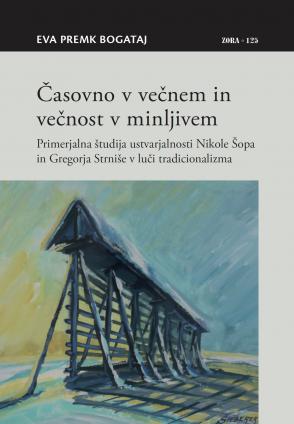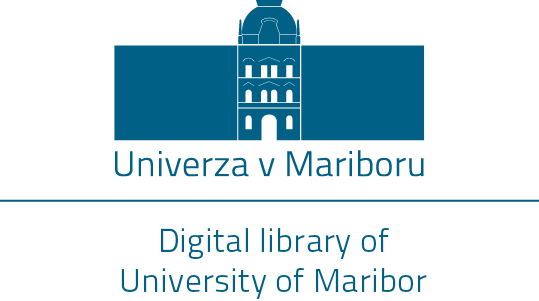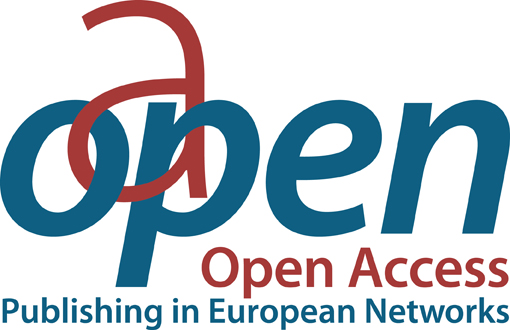Časovno v večnem in večnost v minljivem: primerjalna študija ustvarjalnosti Nikole Šopa in Gregorja Strniše v luči tradicionalizma
Keywords:
Nikola Šop, Gregor Strniša, Finitude, Infinity, Perennialist School, Traditionalism, maya, Seyyed Hossein NasrSynopsis
Timely in Timeless, Eternal in Temporal: a Comparative Study of Literary Work of Nikola Šop and Gregor Strniša. Literary thesis Timely in timeless, eternal in temporal: A comparative study of literary work of Nikola Šop and Gregor Strniša in light of Traditionalism examines how Croatian – Bosnian author Nikola Šop (1904–1982) and Slovenian author Gregor Strniša (1930–1987) perceive the relationship between finitude and Infinity, timelessness and time in their literary texts. The basis hypothesis of our research concerns the complex mode of perception of finitude and Infinity which both authors share. They perceive the finitude (temporal and spatial constraint) and Infinity (or Eternity) in a multidimensional, complex way. As we could show in analyzed texts both authors express deeper levels of reality in symbolic, multilayered and intertextual networks of meanings. Thus, Strniša’s and Šop’s literary texts cannot be approached only with a conventional literary-historical apparatus, which is suitable primarily for their poetic analysis. On the basis of the readings of the entire opus of both authors and (almost) all secondary records on Strniša and Šop, we approached the research within the starting point of time and space topic, which is related to the question of finality and infinity, is central. As we have shown in this book our initial hypothesis was confirmed. In the first part of our book we write that the question of finitude and Infinity in Šop’s and Strniša’s literary texts can be interpreted in two ways: on the one hand, quantitatively (it is an approach typical of mathematics, physics and contemporary philosophy) and, secondly, qualitatively. Since the previous research of time, space and cosmology (and thus questions of finitude and Infinity) in the literary texts of Šop and / or Strniša focused primarily on the quantitative dimension of this questions, we tried to find answers to questions that are part of the qualitative level: we were interested in the introduction of their relationship to the Whole, Totality, the Unmanifested or the Absolute on one side and to the Manifested on the other. The “surpassing” of philosophical and (astro) physical apparatus of modern science in Šop’s and Strniša’s thematisation of temporality and non-temporality, finitude and Infinity dictated our search for a tangible apparatus that would frame the less tangible dimension of our central theme (finitude and Infinity) into an academic discourse. We chose the theoretical starting point of Perennialist School, which turned out to be appropriate, as it addresses the vital questions of man and humanity in the context of various world traditions, always taking in consideration adequate multiplicity of meanings of fundamental artistic conceptions. In Slovenia, as far as we know, the school has not yet been presented adequately, but with certainty we can say that by the year 2012, none of the researchers of the South Slavic and Italian areas who examined the texts of Šop and Strniša had addressed the issue from the views of the Perennialist school. Our study is divided in four chapters: Literary historian and cultural insight, The Machine Civilization and the “Logic of Money Spending Slavery”, Perennialist School/Traditionalism or Perennialism and Timely in timeless, eternal in temporal – a traditionalist approach and we focus our analysis above all on those literary texts which were less represented in the past literary studies. In first chapter we shortly presented an overview of Šop’s and Strniša’s life and work and – in the rough lines – the age in which they created their oeuvre. Further on we analyzed some aspects of various critical receptions and focused on some issues that we found important for our topic (e. g. the issue of credo). Third chapter is predominantly theoretical as well: it presents the basic principles of the Perennialist school with its central representatives and introduces some basic concepts (e. g. metaphysics, tradition, and symbol) that our analysis refers to. In second and fourth chapters we analyzed the chosen literary texts of Šop and Strniša. For the presentation of the results of our analysis we extracted the excerpts of less known texts in favor of originality of scientific research, literary texts: Strniša’s drama Brother Henrik, radio play Rainbow Wings, Šop’s poem The Night of Last Craftsman, play The Pompeii Ballad and the Tragedy of void. Our primary objective was to demonstrate a direct connection between the question of finitude and Infinity in the literary texts of both authors and the human aspiration for Transcendence and for achieving Supreme Unity. Findings based on the apparatus of Perennialst school will be briefly summoned up in the following lines.
It would be impossible to overlook that the motto of the path ‘down’ and the motive of the path ‘upwards’ are constantly present in various ways in Strniša’s and Šop’s oeuvre in the form of cosmogonic myth, human fall, path to the underworld, painting of hell on Earth in all occurrences of the paradigm of so called ‘modernism’ as understood by Perennialst School. We investigated Strniša’s walking along the sky map, which is a constant from his poem Odysseus onwards, and Šop’s floating in space and conquering new levels of cosmological space. In traditionalism as presented by Perennialist authors the external path (enlargement) is always connected with the path inward (narrowing and deepening). The motive of the path ‘down’ and the ‘upward’ motive are the central motifs of tradition, which answer two fundamental questions: from where does one originate and where is he headed, were does he return to. In the context of traditionalism, the human path ‘down’ originates from the Infinite, from Being, into manifested, from the vertical to the horizontal, into the Maya. As for the path ‘upwards’ it represents the return of man back to Infinity, to Being. When we interpret this motif within traditionalism, we find numerous confirmations for the proper interpretation in the Šop’sand Strniša’s literary texts, which is also evidence that Infinity cannot be interpreted differently than in traditional manner, that is, as something permanent: Infinite, Eternal, Transcendent, Being and Beyond-Being or any of the many names and naming within the traditional religions of the all-inclusive Absolute.
The leitmotif of t he Strniša’s a nd Šop’s t exts i s t he d uality t hat m any researchers have highlighted. Our research is based on the concepts of Maya and Atma of Advaita Vedanta and we came to conclusion that in is present in all traditions and traditional religions. On the one hand stands everything that is unmanifested, on the other everything that is manifested. In traditionalism, there is a strong transition in both directions smong these two poles, because two realities, so to say, are strongly connected. Therefore the results of our analysis show a different interpretation than the current understanding of duality as excluding contradictions, divided by a sharp line. Regarding our theme, this means that the boundaries between finitude and Infinity cannot be rigorously set other than in such a way that the essential boundary prevents perception of the Infinity of human limitations conditioned by the seeing of the Maya as the only reality behind which there is nothing. Moreover, we read in analyzed texts that reality is comprehended as a theophany. Within such reality the traditional man perceives metaphysical transparency of phenomenon and thus the eternal now allows the fulfillment of Infinities within finitude, thereby making the duration – eternal now, as we have illustrated with examples from traditional metaphysics in our research.
Our research of Šop’s and Strniša’s texts show a radical critique of ‘modernism’ as Perennialist School understands it. Modernism cuts off its contact with all the realities ‘above’. The critique of modernism as we point out in our work also refers to the perception of the human essence and his existence, none the less also to the definition of time and space as exclusively quantitative categories. Traditional sciences distinguish between doctrinal learning and the realization of this teaching, roughly speaking, between theory and practice, but these, unlike the modernist view, are two aspects of the same whole which are equally important. In Strniša’s and Šop’s works, we could trace as many appearances of doctrinal knowledge of cosmological and other sciences as possible. The deeper the lyric subject travels into its interior, which traditional mysteries name a mystical path, the more the intersection of the merger with its Source becomes a mystical experience. Generally speaking, the milestone between finitude and Infinity is blurred and the inner path is baulked, so that man’s life cannot expand to pure Being and thus become Absolute. Finitude and Infinity is, crucially, understood according to traditionalism qualitatively – in the sense of a human subjective restraint which prevents him to become a part of Infinity. Our analysis had further strengthened our confidence that man represents the intersection of timelessness and timely, he stands betwixt vertical and horizontal axes.
Our findings appear to be well supported a great number of levels ofmeanings of analyzed texts. According to the teachings of traditional authors, we have found that only the sum of multiple levels of meanings together constitutes the synthesis of the message. In contrast to previousm, research we tried to analyze mainly the deeper meanings of the symbols in texts. As a conclusion, the key contribution of our research to comparative literary history we can emphasize putting discourse of Perennialist School into literary practice, namely into Slovenian and Croatian-Bosnian literary historical area. Further, the application of the ‘perennialist approach’ to the analysis of literary texts written by two authors whose poetics are extremely demanding, multifaceted and had been in the past often assessed as ‘hermetic’. The questions of finitude and Infinity had been answered in contradictory ways prior to our research. The findings were illogical and confused and have now become more manageable with the perennialist approach. Our research draws attention to the unfounded exclusivism of empirical and quantitative approaches to literary texts. In the end we emphasise that the key contribution of this work is not only the transfer of Perennialist School into Slovenian literary history and our application of the so called perennialist approach to the analysis of finitude and Infinity to literary texts of two authors whose poetry is highly exacting and complex, but we also demonstrate the importance of studying the traditional literary authors, such as Nikola Šop and Gregor Strniša, with spiritual literacy as adequate apparatus.
Downloads






